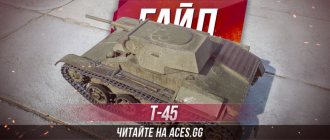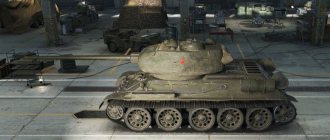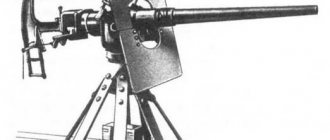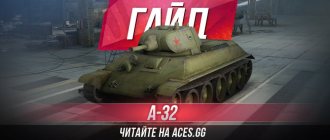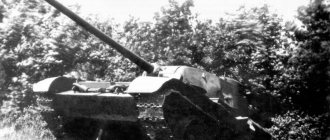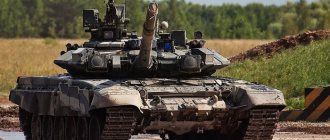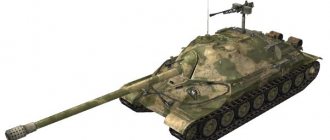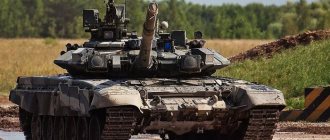The long-awaited release of the double-barreled tanks branch. Are they as awesome as they say? Guide and gameplay features of IS-2-II. Is it worth downloading?
IS-2-II is the first representative of the sub-branch of Soviet heavy double-barreled tanks in World of Tanks, which appeared in patch 1.7.1. Greetings, tankers! Wotpack is with you and today we will look at the gameplay features, equipment selection and crew training for the IS-2-II .
TTX IS-2-II
Let’s take a closer look at the machine’s parameters by comparing it with other Soviet level 8 classmates.
Firepower
The first upgradeable two-gun tank has a 100 mm gun with a one-time damage of 300 units, which is the lowest value, but is compensated by the possibility of a double shot. Armor penetration with a basic 221 mm armor-piercing projectile, which does not stand out against the background of pumped-up equipment. At the same time, premium tanks Object 703 II and IS-3 with M3 have exactly the same indicator. As for penetration with gold sub-calibers, it is 256 mm.
Full characteristics of ammunition:
It is worth noting the good speed of projectile flight. But do not forget that armor-piercing ones have better normalization, and subcalibers lose penetration with distance.
Despite having two guns, the turret traverse speed is good at 27.12°/s, on par with the IS-3. The gun has comfortable stabilization, better accuracy of 0.36 and aiming time of 2.4 seconds. It also has a good gun declination angle of -7°, and rises by +20°
Special attention should be paid to the features of reloading guns, which are dictated by the peculiarities of firing, because double-barreled tanks have three modes available: cyclic, sequential and double shot.
| Gun reload time (1/2) sec. | 8,15/8,15 |
| Salvo shot preparation time (sec) | 2 |
| Recharge lock time (sec) | 4 |
| Gun change time (sec) | 4 |
The average damage per minute largely depends on which fire mode to use, but in the game we are offered a value of 2209 units, which can be called the best result among Soviet heavy weapons.
Vitality
The minimum safety factor is 1500 units. The hull armor leaves much to be desired in terms of reliability:
- the legendary Soviet “pike nose” is missing;
- weak nominal armor;
- vulnerable driver's hatch in the forehead.
Taking into account the VLD adjustment of 220 mm, almost any classmate can pierce it. Rotating the body is also not an option, because then the “cheeks” will open. The only way to tank at the top of the list is from the tower. In the frontal projection it is quite strong and few people can sell it without gold. But there is one unpleasant nuance - it penetrates with damage even into the gun mantlet, the lower part of which has only 230 mm of armor.
Other indicators
With a mass of 55.95 tons, the tank has a better specific power of 14.72 hp/t due to its powerful engine. Therefore, it reaches its maximum speed of 34 km/h quite quickly, while it has good maneuverability of 31.29 °/s. If there are two guns, there is no need to talk about stealth, but still, after a shot, it does not decrease as much as that of the same IS-3. The viewing range of 350 meters is typically low for the USSR TT.
History of multi-gun tanks of the USSR
In 1939, in the USSR, twin guns were mounted for the first time in a KV turret. When assembling the prototype vehicle No.U-0 at the Izhora plant, 76-mm and 45-mm twin guns were installed in the turret.
Field and factory tests of the KV-U-0 tank took place from September to December 1939. During testing of armor protection, the 76-mm L-11 cannon was damaged - when the tank was fired upon, the shell hit the barrel, which it could not penetrate, but a bulge formed in the barrel bore.
During subsequent testing of the weapons, they were found to meet the tactical and technical requirements, unlike the ammunition (it turned out to be less than necessary). Thus, the KV-U-0 managed to undergo sea trials with twin guns.
The next tank project, already with three guns, was started in 1941. The team of plant No. 183, evacuated to Nizhny Tagil, worked on it. The tank, designated T-34-3, was developed under the leadership of A. A. Morozov. It was a T-34, in the turret of which, in addition to the 76-mm F-34 cannon, a pair of 45-mm cannons was installed.
A technical design and design documentation were indeed developed for the T-34-3, but it did not even get to the point of manufacturing a prototype.
Then, at the end of 1941, a project for an extremely unusual KV tank with three guns appeared: one 76-mm F-34 cannon and two 45-mm. Its creators decided to abandon the rotating turret, since the built gun mount took up too much space. In fact, it was a self-propelled gun, but formally this vehicle was called either simply “KV-7 tank” or “assault tank”.
On December 27, 1941 (10 days behind schedule), the KV-7 prototype passed factory tests. Work on the tank continued for some time, and only in December 1943 was it sent for scrap.
There were several reasons for the closure of work on double-barreled tanks. Experience with the KV-7 has shown that achieving a relative rate of fire is associated with a number of inconveniences in operating the vehicle.
Two guns instead of one in a tank turret or wheelhouse did not double, for example, the armor penetration rate of guns. The creation of such systems was then due to the lack of a more powerful weapon of a larger caliber.
In conclusion, we note that double-barreled tanks are projects that are not divorced from reality; designers still return to them.
Advantages and disadvantages
Having familiarized ourselves in detail with the tactical and technical characteristics, we can identify strengths and weaknesses in order to better understand the capabilities of the IS-2-II.
Advantages:
- high damage when fired with a doublet;
- excellent gun stabilization;
- quick mixing;
- good accuracy;
- high DPM;
- good mobility;
- good UVN.
Flaws:
- mediocre hull armor;
- small one-time damage during cyclic shooting;
- low visibility;
- short communication range;
- It will take time to get used to the mechanics of the twin guns.
Selection of equipment for IS-2-II
Installing additional modules will increase the basic parameters of the vehicle, making the game more comfortable and more effective in battle. Considering the features of double-barreled tanks, it is impossible to install a Rammer here, so it will not be possible to speed up reloading. Therefore, for the first acquaintance with the new sub-branch, we recommend the following assembly:
- improved ventilation - although slightly, will increase all the characteristics of the machine. The effect will become more noticeable if the crew has the Battle Brotherhood;
- vertical stabilizer - will reduce the range of dispersion, complementing one of the strengths of the equipment, in order to be ready to fire almost everything + helps a lot when preparing a salvo, when it is necessary to target the enemy;
- reinforced aiming drives - also primarily designed for full combat readiness every second of the battle and, again, will come in handy to more accurately send a “doublet” at an enemy tank.
If you have a new crew and don’t yet have visibility perks, then it makes sense to replace the ventilation with coated optics, which will add 35 meters to the viewing range.
Crew training for IS-2-II
The new equipment is serviced by a crew of 5 people. The commander, as usual, combines the role of a radio operator, and there are now 2 loaders, one for each gun.
Order of learning and influence of skills
As always with heavy tanks, it’s worth starting with learning Repair. The commander can then reset the skill and select Sixth Sense. Next you should move on to the skills of column 3, because most of them are valid from the moment they are learned. This is necessary in order to reset the skills again later, but for the entire crew to study the Brotherhood of Battle, which only works with 100% mastery of all tankers.
For the commander, take Radio Interception as the fourth skill to increase visibility by 10.5 meters. Profile skills of the gunner and driver: Smooth movement and smooth rotation of the turret will make the stabilization of the gun even better. A sniper will be needed to increase the chances of inflicting critical damage when fired twice. The off-road king will help you reach top speed faster. For the first loader we study the Non-contact ammo rack, and for the second the Desperate one, so that when the safety factor is reduced to 150 units, we will speed up reloading by 9.1%. Then both loaders select Intuition to quickly change the type of projectile, the effect of which is cumulative.
Modules:
Turrets/guns
| Lv. | Tower | Armor (mm) | Rotation (deg/sec) | Review (m) | Weight, kg) | Price (credits) |
| VII | IS-122 | 100/90/90 | 28 | 350 | 7 500 | 20 000 |
Compatible weapons:
| Lv. | gun | Penetration (mm) | Damage (HP) | Rapid fire (rounds/min) | Spread (m/100m) | Mixing (c) | BC | Weight, kg) | Price (credits) |
| VIII | 122 mm D-25T | 175/217/61 | 390/390/530 | 4.88 | 0.46 | 3.4 | 28 | 2 590 | 125 140 |
Engines
| Lv. | Engine | Power (hp) | Fire probability (%) | Weight, kg) | Price (credits) |
| VII | V-2IS | 600 | 15 | 750 | 36 000 |
Chassis
| Lv. | Chassis | Max. load (t) | Turning speed (gr/sec) | Rmin | Weight, kg) | Price (credits) |
| VII | IS-2M | 48.4 | 38 | B/2 | 11 500 | 20 000 |
Radio stations
| Lv. | Radio station | Communication range (m) | Weight, kg) | Price (credits) |
| VII | 10РКМ | 440 | 100 | 18 600 |
Equipment selection
The quality of consumables is a personal choice; improved ones, of course, will increase the survivability and efficiency of the game, but at level 8 you can still get by with ordinary ones. In general, the set has a standard appearance:
- repair kit;
- first aid kit;
- fire extinguisher (an automatic one is still preferable, so we recommend not saving on it).
As practice has shown, arson is a common occurrence on the IS-2-II . Therefore, replacing the third slot with the national dish Doppayek is a risky activity, since sometimes your chair can burn along with the tank.
Reservations:
This is how it looks on paper, but the tank has rational armor angles. Therefore, it’s harder to break through us.
I also managed to find this:
Among the vulnerable places I will note the NLD, sides and sides of the tower. In general, for a TT of your own/higher level, it is not difficult to penetrate IS-2 if you have the hands =)
How to play the IS-2-II
Before we move on to the gameplay of the tank in battle, let's see how its parameters will change taking into account the recommendations:
We have excellent potential damage per minute, aiming time at the ST level and accuracy that other heavyweights can only envy. The key drawback remains the lack of visibility; even with full “stuffing”, it will not yet be possible to accelerate it to the maximum value without coated optics.
At the top of the list, the IS-2-II can fulfill its class role only if the hull, and especially the NLD, is hidden. Only some tank destroyers will be able to penetrate the tower, so you shouldn’t get too impudent. This TT is more suitable for a support role, but certainly not a breakthrough tank.
It is not profitable to play as an alpha strike, because in this he is inferior to most of his classmates, but carefully monitor the situation in battle, try to catch a distracted enemy in order to discharge a “double” at him. You should only use a double shot at close or medium range if you are confident that you can correctly determine the enemy’s movement. Otherwise, it is better to play more reliably through sequential firing.
In head-to-head duels, it is better to play from cyclic reloading, and when the enemy has about 500 HP left, then go out and get it with a double shot. Please note that a doublet shot is not a panacea, so you should not abuse it. Both projectiles may go into the ground, into the tracks, or simply not penetrate. Therefore, when preparing a double shot, take your time and aim carefully.
We have prepared a guide on how to play double-barreled tanks . Starting from setting up the keys and how the mechanics of twin guns work, we recorded short videos of how the new feature is implemented in the game and ending with general tips and tactics in battle (there are important nuances in using two guns). You can find out more at this link.
Historical reference
Initially, the IS-2 heavy tank (also known as IS-122) was the result of a modernization of the conventional IS. In 1944, it was equipped with a cast frontal part that was easier to manufacture, the thickness of which was 120 mm. It was actively used at the final stage of the war and was used to storm cities, in which it was able to prove itself excellently.
Officially, the factories did not add screens, but in combat conditions, tankers, in order to increase their own safety in street battles, welded various gratings or meshes in a “makeshift” way.
Information on the topic
For convenience, we have collected together all the key links on the topic of double-barreled tanks:
Branch overview
How to play double-barreled tanks
IS-3-II - heavy double-barreled tank of the USSR tier 9
ST-II - heavy double-barreled tank of the USSR, level 10

